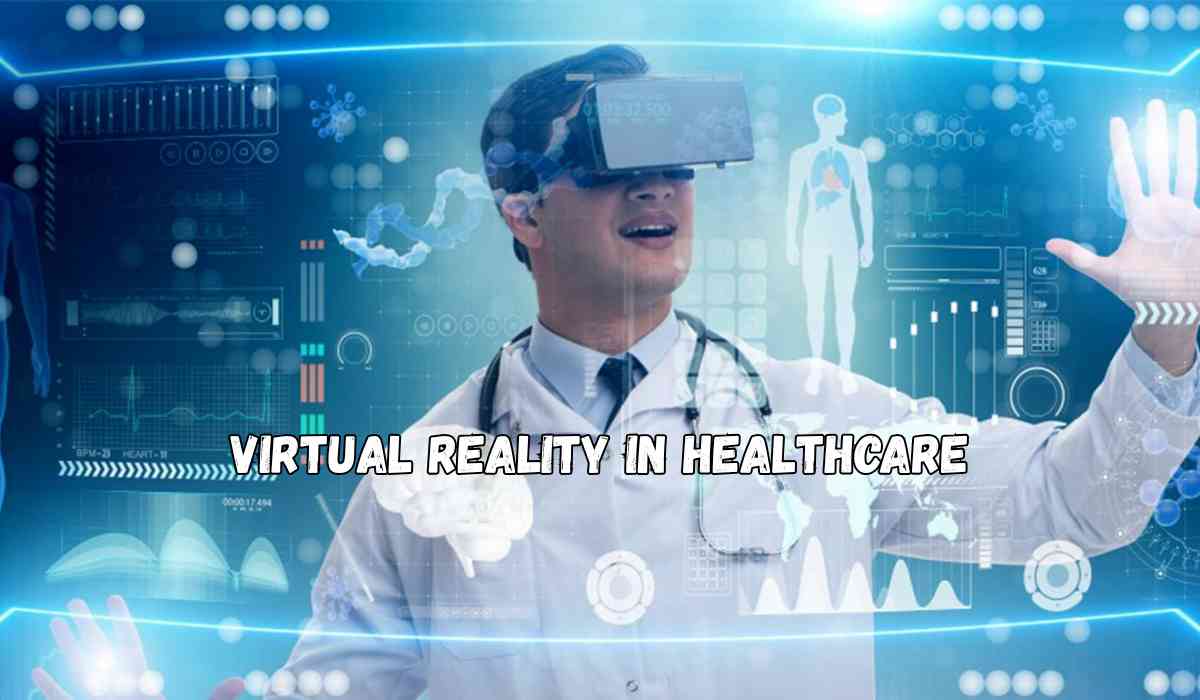Virtual Reality (VR) is rapidly reshaping the landscape of healthcare, introducing innovative ways to diagnose, treat, and educate that were once the realm of science fiction. From immersive surgical simulations to pain management and mental health therapy, VR technology is becoming an indispensable tool for medical professionals and patients alike. However, integrating VR into healthcare systems is not without its challenges.
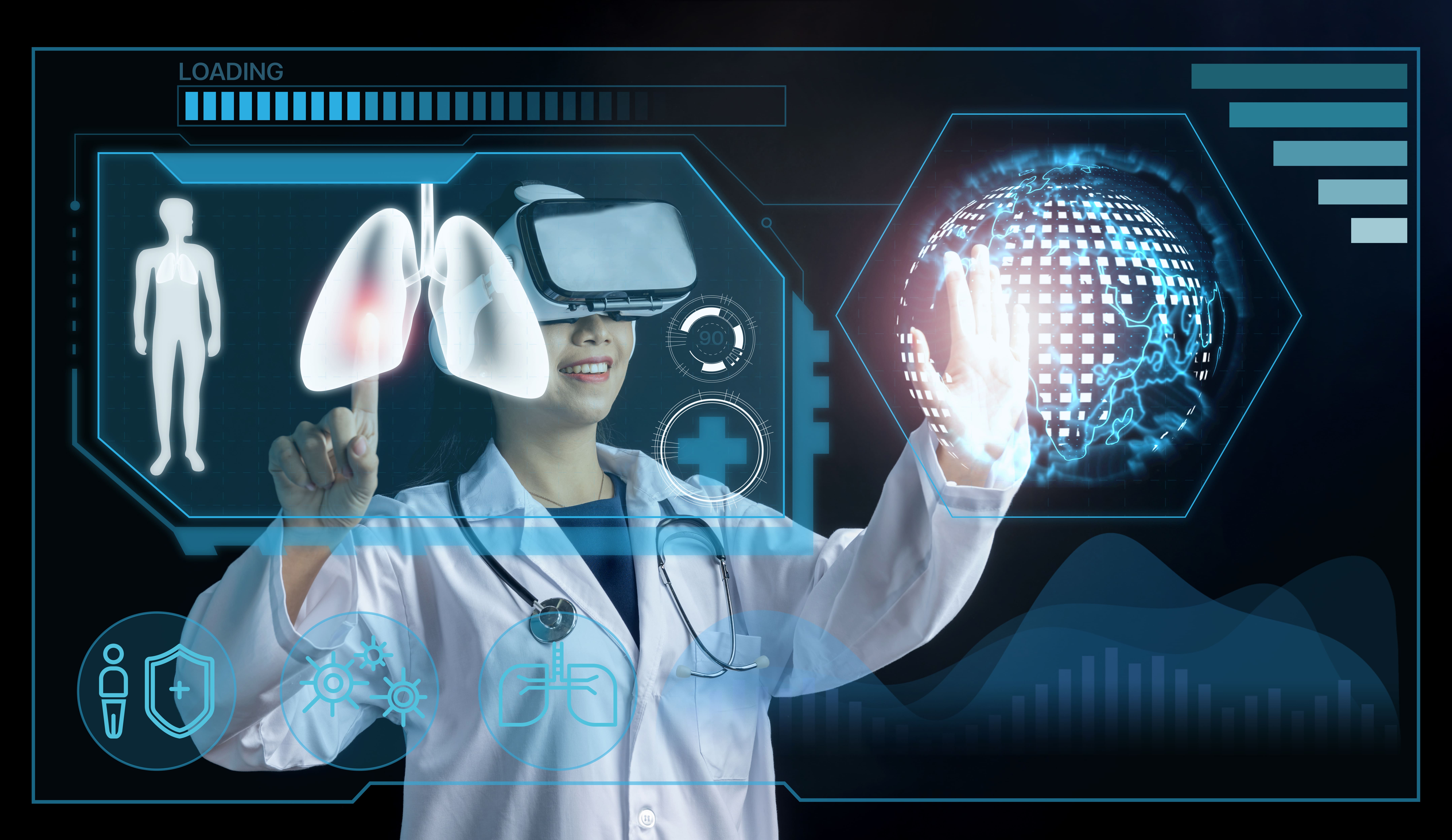
What Is Virtual Reality in Healthcare?
Virtual Reality (VR) in healthcare refers to the use of computer-generated immersive environments that simulate real or imagined scenarios, allowing users to interact within a three-dimensional space using specialized equipment like VR headsets and haptic controllers. In healthcare, VR serves multiple functions: training medical professionals, assisting in patient therapy, enhancing rehabilitation, managing chronic conditions, and providing personalized mental health treatments.
VR technology in healthcare comes in three main types:
-
Non-immersive VR: Users interact with virtual environments via standard computer screens, offering limited immersion.
-
Semi-immersive VR: Provides a partial sense of immersion, often through large screens or projection systems.
-
Fully-immersive VR: Delivers complete immersion using head-mounted displays and motion tracking, allowing users to feel present in the virtual world.
These varying levels of immersion offer tailored solutions for diverse medical needs.
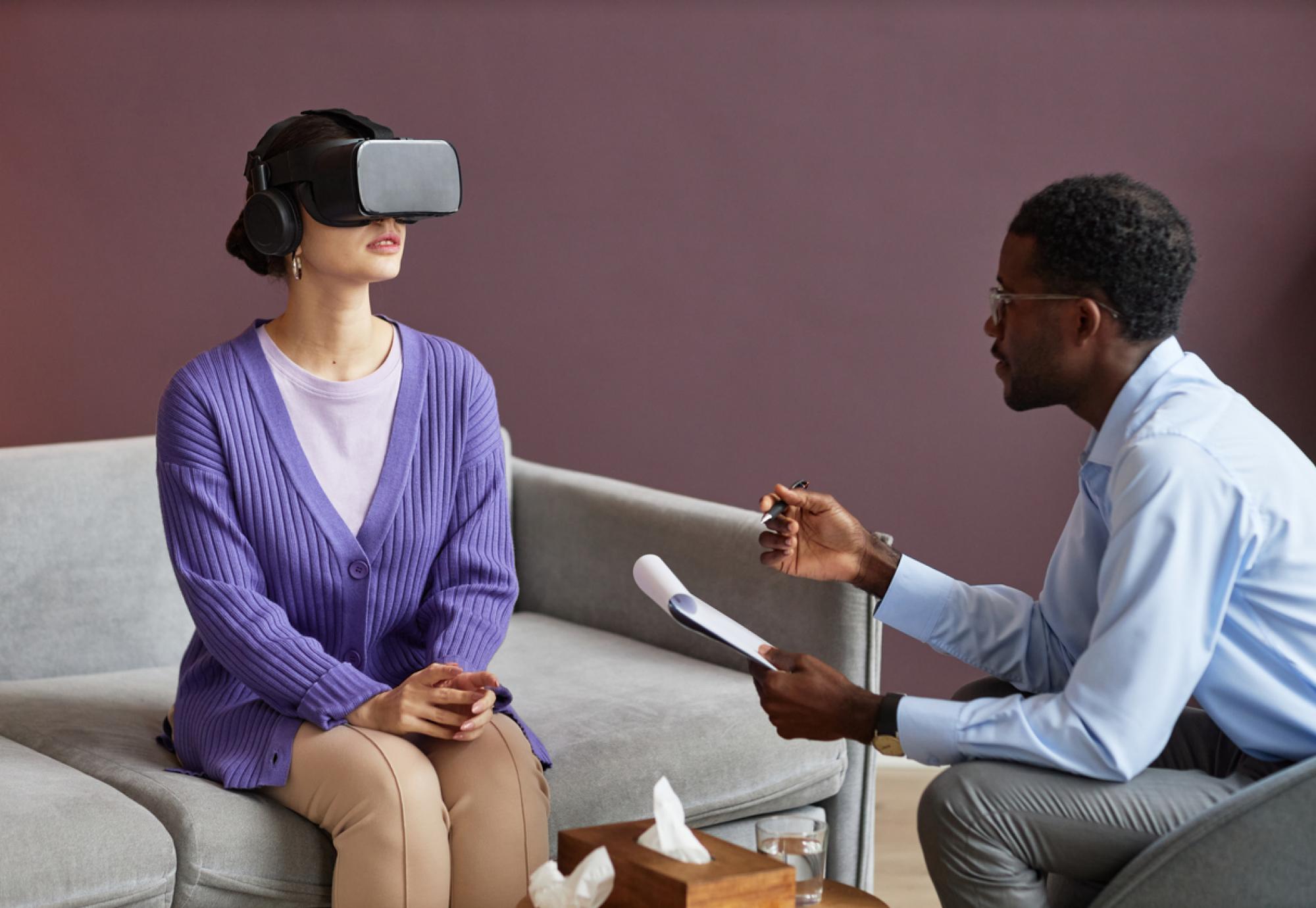
Types of VR Applications in Healthcare
Virtual Reality’s versatility makes it applicable across many healthcare sectors. Key areas of VR application include:
- Surgical Training and Simulation
VR enables surgeons to practice complex procedures in a risk-free, simulated environment using haptic feedback. Surgeons can rehearse various surgical scenarios to sharpen precision and preparedness, leading to better patient outcomes.
- Pain Management
VR distracts patients from chronic and acute pain by immersing them in engaging virtual environments. This reduces reliance on pain medication, cuts healthcare costs, and improves quality of life.
- Physical Therapy and Rehabilitation
VR-assisted therapy allows patients to perform repetitive physical exercises in a motivating, game-like setting. AI-driven virtual instructors can monitor patients’ form and progress, enhancing the effectiveness of rehabilitation.
- Medical Education and Training
Medical students and professionals benefit from interactive VR learning modules, enabling hands-on experience with anatomy, procedures, and emergency responses without risking patient safety.
- Mental Health Therapy
Personalized VR exposure therapy helps treat anxiety, phobias, PTSD, and stress disorders by gradually introducing patients to triggering environments in a controlled, virtual setting.
- Chronic Disease Management
For diseases like Parkinson’s and Alzheimer’s, VR supports cognitive and motor skills therapy, aiding in memory retention and improving balance and coordination.
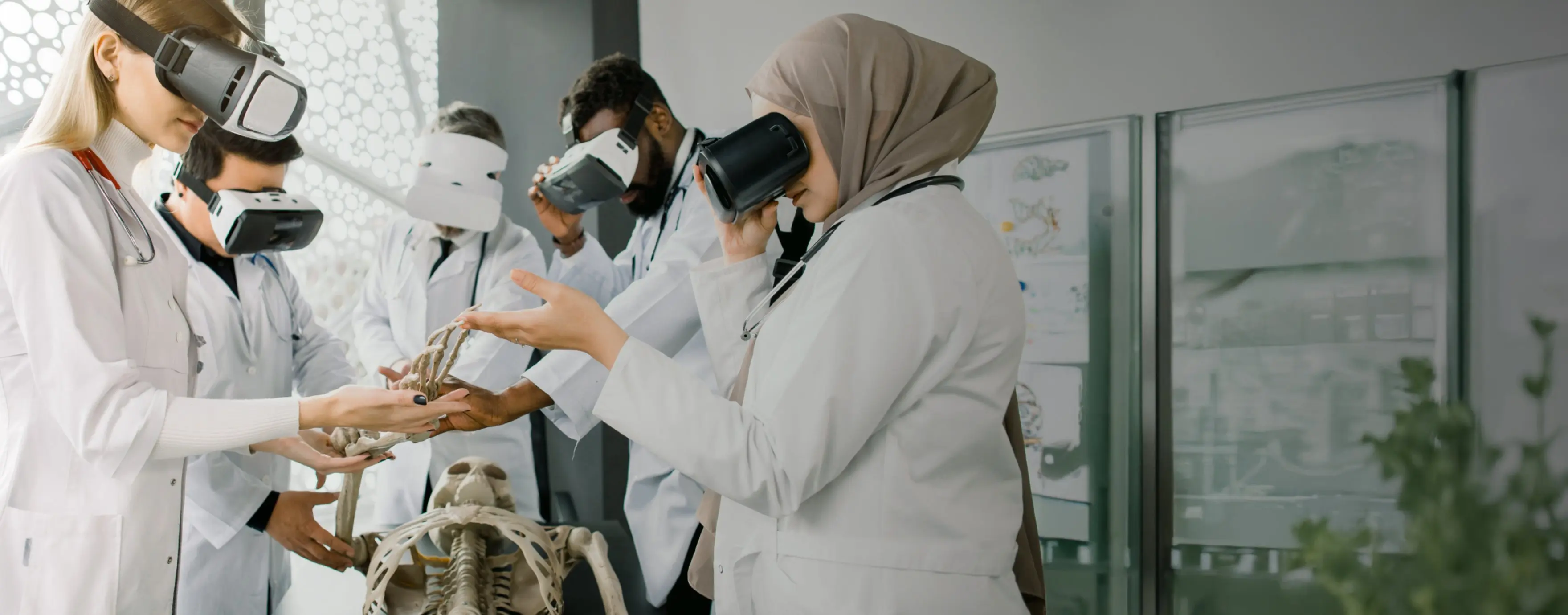
Benefits of Virtual Reality in Healthcare
1. For Patients
-
Improved Pain Control: VR serves as a distraction tool, reducing the perception of pain.
-
Enhanced Rehabilitation: Interactive exercises make physical therapy more engaging and effective.
-
Tailored Mental Health Treatment: Customizable VR scenarios address specific psychological conditions.
-
Better Chronic Disease Management: VR assists patients with long-term neurological disorders by improving motor and cognitive functions.
-
Reduced Anxiety and Fear: VR prepares patients for surgeries or procedures, reducing stress through education and visualization.
2. For Medical Professionals
-
Safe Surgical Practice: VR simulations allow surgeons to hone skills without risking patient safety.
-
Effective Training: Medical students gain practical experience in a controlled environment.
-
Remote Consultation and Monitoring: VR enhances telemedicine with immersive patient interactions.
-
Improved Patient Engagement: VR-based therapies foster higher patient motivation and adherence to treatment.
-
Enhanced Data Collection: Integration with Electronic Health Records (EHR) allows clinicians to track progress and adjust treatments dynamically.
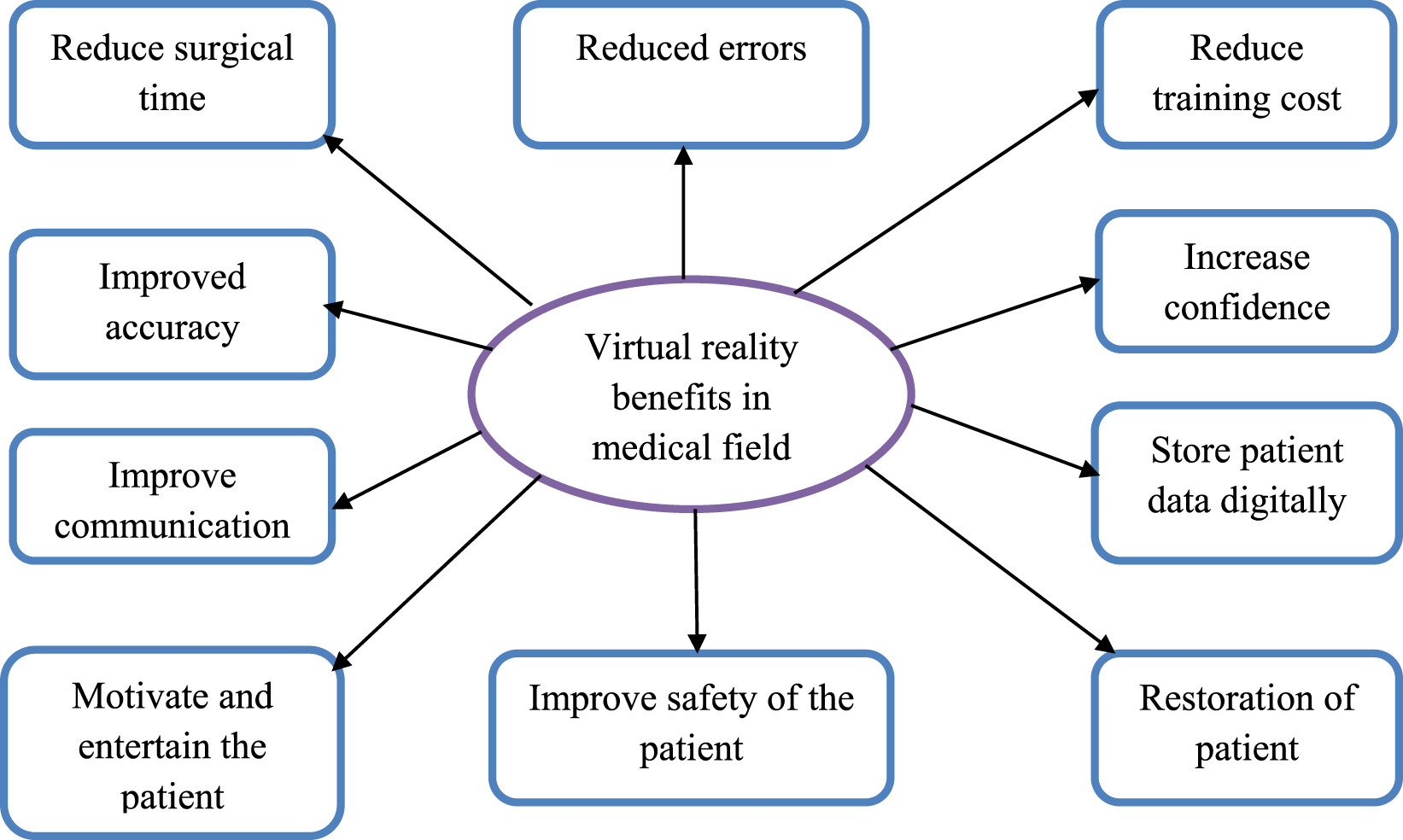
Challenges of Virtual Reality in Healthcare
Despite its promising potential, VR adoption in healthcare faces several hurdles:
- Higher Initial Costs
Implementing VR requires expensive hardware and software development, especially challenging for smaller clinics with limited budgets.
- Technological Barriers
Many users—patients and healthcare providers alike—may struggle with VR interfaces. Physical discomfort, such as motion sickness or eye strain, can reduce engagement. Integration of VR systems with existing healthcare infrastructure often demands complex development.
- Lack of Accessibility
Patients with physical impairments or limited digital literacy may find VR difficult to use. Additionally, not all patients can afford VR hardware like headsets, creating disparities in access.
- Ethical and Privacy Concerns
Storing and handling sensitive health data within VR platforms raises privacy issues. Compliance with regulations such as HIPAA and GDPR is critical but challenging. There is also a risk of over-relying on VR and neglecting traditional treatments.
- Health and Social Issues
Extended VR use can cause social isolation, and limited mobility due to physical space requirements can constrain its use. Some users may experience sensory overload or disorientation, making adaptation difficult.
- Technical Limitations
Current VR technology is still evolving, with issues related to graphics quality, latency, and occasional glitches affecting user experience.
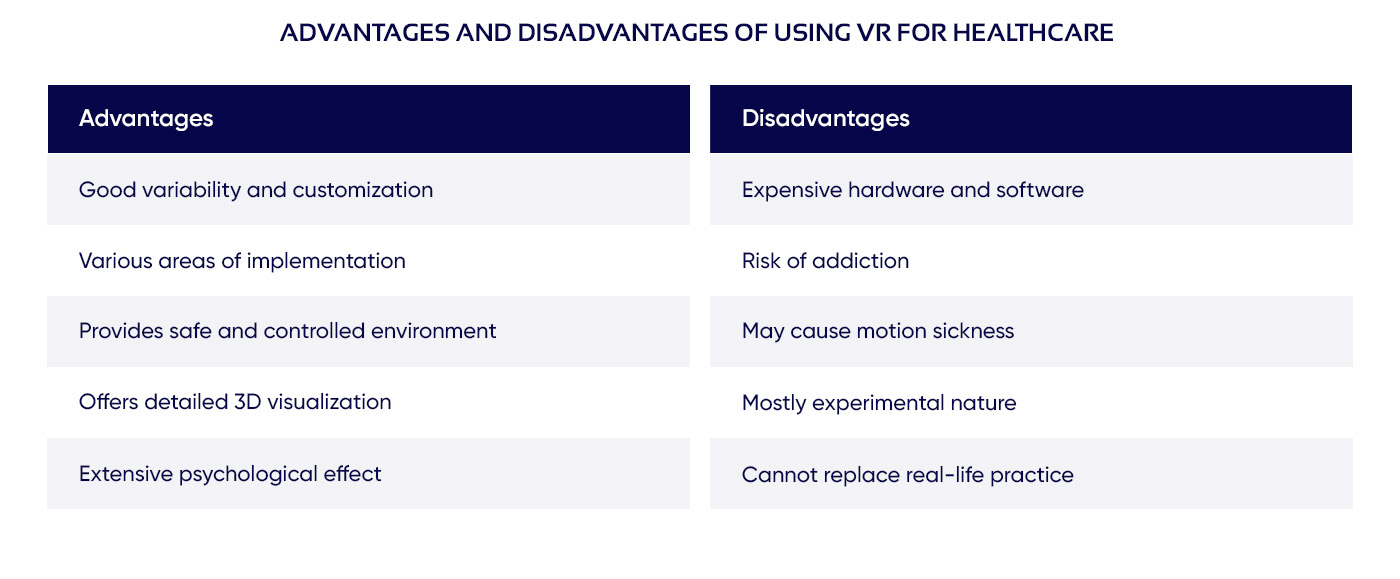
How to Overcome Challenges of VR in Healthcare Industry?
Healthcare institutions can adopt a strategic and structured approach to overcome these challenges:
Addressing High Costs
-
Use cloud-based VR platforms to reduce upfront hardware investments.
-
Collaborate with vendors and developers to negotiate scalable, budget-friendly solutions.
Overcoming Technological Barriers
-
Hire specialized VR development teams to customize and integrate VR solutions seamlessly.
-
Focus on user-friendly interfaces and ensure sufficient training for users.
Improving Accessibility
-
Utilize adaptive technologies for patients with disabilities.
-
Implement digital literacy programs to empower patients and clinicians alike.
Mitigating Ethical and Privacy Concerns
-
Ensure compliance with data protection laws like HIPAA and GDPR.
-
Provide clear communication to patients about the pros and cons of VR use.
-
Train healthcare professionals thoroughly to reduce misuse and errors.
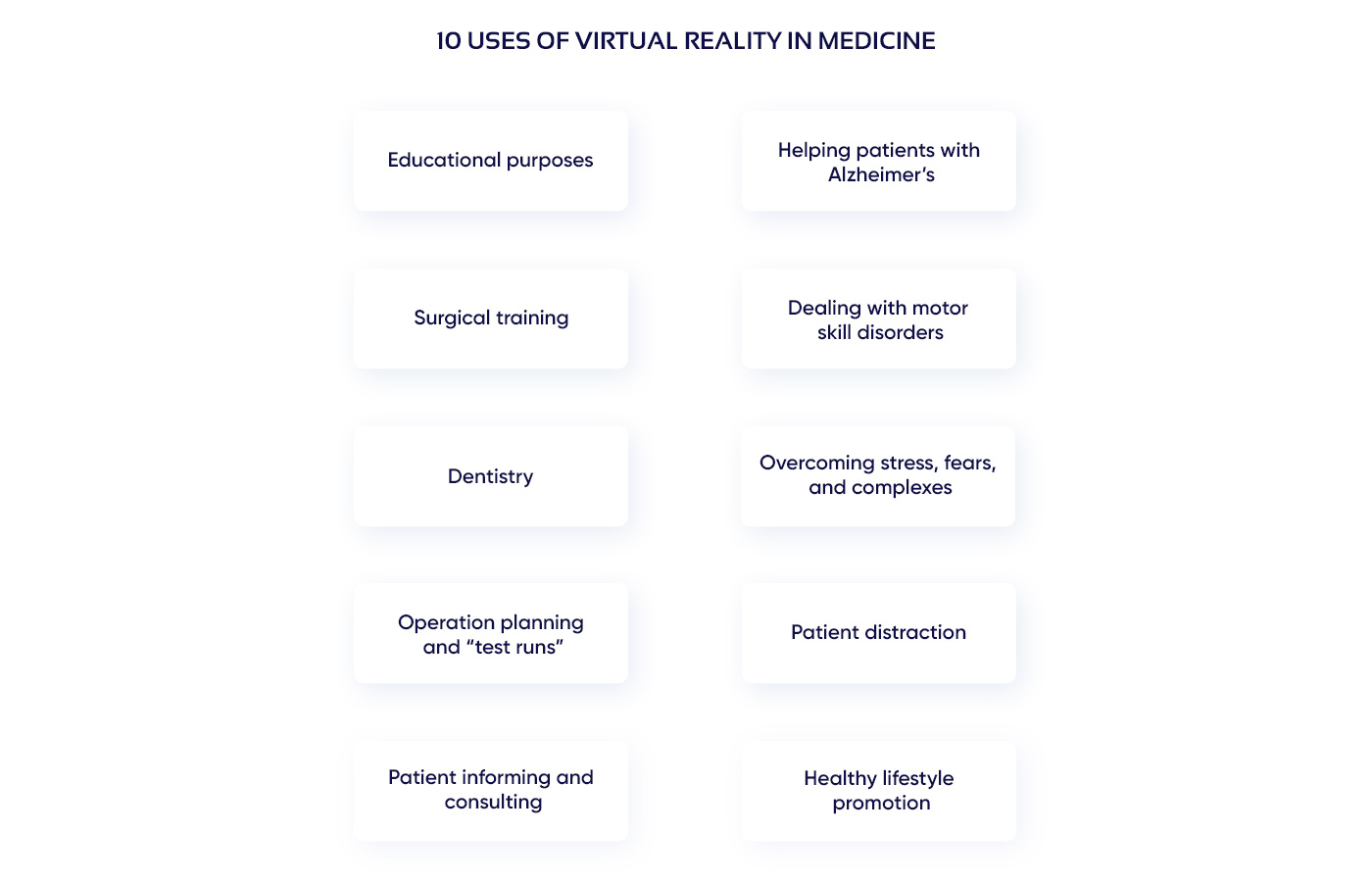
VR Applications in Healthcare: Practical Examples
-
Surgical Training: VR simulations offer surgeons a risk-free environment to practice precision and assess various scenarios.
-
Pain Management: VR helps manage chronic pain by diverting attention, minimizing opioid use.
-
Physical Therapy: Virtual exercises supervised by AI coaches enhance recovery, with integration into EHR systems for monitoring.
-
Mental Health Therapy: Personalized exposure therapy reduces anxiety and phobia symptoms effectively.
-
Chronic Disease Therapy: VR exercises aid Parkinson’s patients in maintaining motor skills and Alzheimer’s patients in cognitive therapy.
Future of Virtual Reality in the Medical Field
The future of VR in healthcare is bright and filled with innovation:
- Advances in VR Technology
Next-generation VR will feature high-fidelity simulations enhanced by Artificial Intelligence (AI) and Internet of Things (IoT) integration, making treatments more precise and personalized.
- VR-Based Remote Consultation
Immersive VR telemedicine apps will enable real-time remote patient monitoring, improving access to healthcare for remote or mobility-impaired patients.
- Personalized and Advanced Rehabilitation
Using motion sensors and machine learning, VR rehabilitation programs will adapt dynamically to patients’ progress, offering tailored recovery paths.
As VR continues to evolve, it promises to revolutionize how medical professionals train, how patients recover, and how healthcare systems operate, ultimately delivering more effective, accessible, and compassionate care.
Virtual Reality is not just a futuristic concept but a current reality reshaping healthcare. By understanding its applications, benefits, challenges, and future potential, healthcare providers can strategically implement VR to enhance outcomes for patients and professionals alike. Overcoming initial barriers with thoughtful planning will unlock VR’s full promise, driving the next wave of medical innovation.
With inputs from agencies
Image Source: Multiple agencies
© Copyright 2025. All Rights Reserved Powered by Vygr Media.

